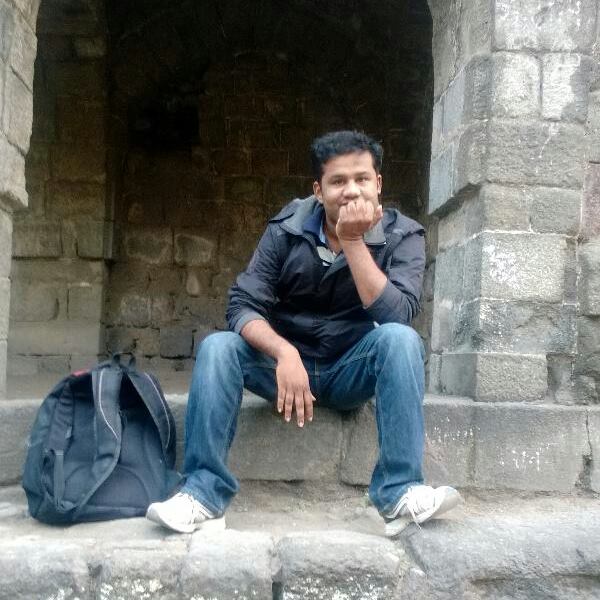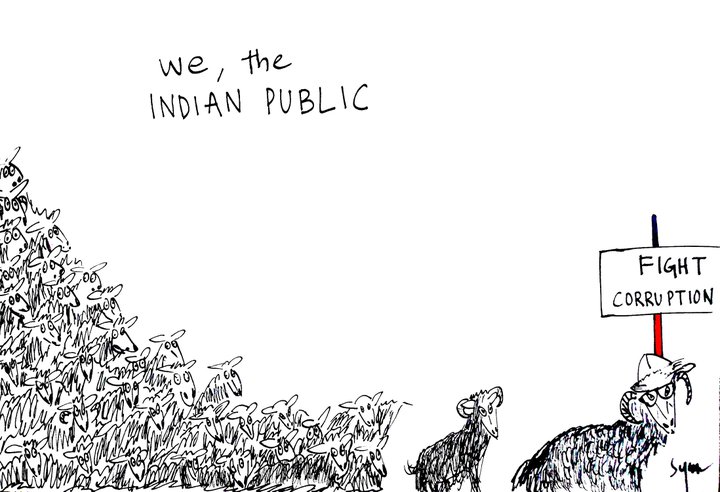Musafir Baitha
 Kabir walked this earth almost 600 years ago, and his ideas have had a tremendous impact. Ours was a feudal society back then. The suffocating traditions of the Hindu religion such as caste differences, blind beliefs and superficial rituals had made the lives of the common people miserable. So overwhelming was their influence that the poison of caste discrimination also seeped into our Muslim community that was formed after the arrival of the invading Muslim ruling classes. Whether it was the equality of Islam offered by the Muslim rulers, the yearning to overcome the oppression caused by tradition, or even coercion at the hands of the rulers – there were all sorts of reasons that motivated the neglected and lower castes among the contemporary population to accept Islam. However, despite being founded on the premise of equality, even Islam was corrupted by the cancer of caste prevalent in the Indian subcontinent; much like the proverbial barrel which is spoiled by one rotten apple. The ‘original/higher’ Muslims (who came from outside) established themselves in the ruling centre with the help of the castes located at the highest echelons of the caste hierarchy, namely the Brahmins and the Rajputs. Emulating these Hindus lurking near power centres, the ruling Muslim community began discriminating against new converts along caste lines. The funny thing is, the odd savarnas who did convert to Islam, successfully placed themselves in the original rung along with the Muslim ruling class. That is, the divisive market of caste found its stalls even in the Indian Muslim society, the Hindu religion had repainted Islam in its own image.
Kabir walked this earth almost 600 years ago, and his ideas have had a tremendous impact. Ours was a feudal society back then. The suffocating traditions of the Hindu religion such as caste differences, blind beliefs and superficial rituals had made the lives of the common people miserable. So overwhelming was their influence that the poison of caste discrimination also seeped into our Muslim community that was formed after the arrival of the invading Muslim ruling classes. Whether it was the equality of Islam offered by the Muslim rulers, the yearning to overcome the oppression caused by tradition, or even coercion at the hands of the rulers – there were all sorts of reasons that motivated the neglected and lower castes among the contemporary population to accept Islam. However, despite being founded on the premise of equality, even Islam was corrupted by the cancer of caste prevalent in the Indian subcontinent; much like the proverbial barrel which is spoiled by one rotten apple. The ‘original/higher’ Muslims (who came from outside) established themselves in the ruling centre with the help of the castes located at the highest echelons of the caste hierarchy, namely the Brahmins and the Rajputs. Emulating these Hindus lurking near power centres, the ruling Muslim community began discriminating against new converts along caste lines. The funny thing is, the odd savarnas who did convert to Islam, successfully placed themselves in the original rung along with the Muslim ruling class. That is, the divisive market of caste found its stalls even in the Indian Muslim society, the Hindu religion had repainted Islam in its own image.
It is evident that even in Kabir’s time, the human rights of the suffering masses, be it Hindu or Muslim, were mortgaged to feudal rulers and their kind. Also, the communal tension and hatred between Hindus and Muslims had peaked. Feudalism embraced Brahminism. In such a harsh society, it is obvious that someone who shows a way to fulfil the aspirations of the people would inspire a significant following. The result was that the liberators from religious mumbo jumbo unfurled a new wing in the hues of Kabir. The followers of Kabir rallied under the banners of ‘Kabirpanth’ and used his ideas to begin all sorts of social interventions.
In Kabir’s time, only two religions remained in the subcontinent. Before him, the revolutionary Buddha and Mahavir had come and gone, and the influence of Buddhist and Jain religions, which began and propagated in their name, had also waned as a result of the tyranny of religious Hindu powers and rulers. Hinduism, by regaining its sickly self had reclaimed its terrorising power structure and dominion. It was at this time that Kabir, a unique intellectual force (presumed to be illiterate), stormed the scene as a bright flame and paved the way for a more humane approach between Hindus and Muslims who were fighting in the name of religions gripped by superficial rituals. The rituals, superstitions and traditions associated with religion often led to situations of confrontation between Hindu and Muslim societies. Kabir cautioned, reprimanded and even rebuked followers of both religions to avoid these wasteful religious practices which came in the way of humanity. The followers of the tenets of Kabirpanth, a group which consists of the humane and wise from both the Hindu and Muslim communities, try to disseminate such ideas of Kabir long after he is gone.
It was not possible to favour either Hindu or Muslim rituals while following Kabir’s ideals and views. And, if we leave aside superficial rituals, what is left of these religions? Therefore, the original Kabirpanth was a path of extreme inconvenience. It could only be adopted after abandoning religion. But there is no evidence that at any point in time, even the most ardent Kabirpanthi ever claimed to be an atheist. As I understand it, the principal reason for Kabirpanth losing its spine was not maintaining a clear distance from Hindu and Muslim faiths.
You will find selfish elements from the so-called upper castes donning the guise of Kabirpanth to serve their own greed and use deceit to occupy leadership positions. Also, the post of ‘mahanth’ is often graced by dominant and upper castes in most of the wealthy and grand ‘Kabir-matths‘! And this was despite the fact that the general section of the upper-castes has never adopted Kabirpanth. Kabirpanth’s principal and chief influence was among the lower sections of Hindu and Muslim societies. The reason was clear, it was the so-called upper sections of the Hindu-Muslim society that had trapped the subjugated castes in the superficialities of religion and ignored and suspended their basic human rights.
It is worth mentioning here that Kabir had less of an impact among Muslims. It is because the religious rigidity of Islamic faith was difficult to escape. Whereas, the Hindu society had 84 crore gods with quarrelsome and uneasy relationships among themselves. Thus, making it easier for people to ‘wander’ away.
Even in these scientific, rational times, no clear and consequential effects of the efforts of Kabir and his adherents are visible despite the fact that the expansion of Kabirpanth has not been insignificant in India. The saying ‘too many cooks spoil the broth’ applies to Kabirpanth too. Because of the public acceptance and the moveable-immovable property associated with Kabirpanthi matths, the selfish, greedy and bloody games for domination over them are very similar to those seen in Hindu temples. This is a major betrayal of injustice to the same Kabir who preached the path of contentment; ‘… Saeen itna deejiye jaame kutum samaay’ [Lord grant me just enough, so that I can sustain my clan]. If we were to use the symbol of Kabir’s son [Kamal], the personnel of these matths have gone the way of Kamal. It is said that those without principles lack strength; hence they cannot handle decisive and consequential struggles over any issue. The indecisions and slips of the Kabirpanth gurus and practitioners are on the same blind path.
Some Kabirpanthis are such fundamentalists that they would not put a log in the hearth before purifying it by sprinkling water on it; in contrast, there are also people with so languid an attitude towards tenets that they are Kabirpanthis only because of the beads they wear around their necks [kanthimala], so much so, that they keep visiting temples and worship idols on a daily basis. Some won’t even eat in pure vegetarian restaurants, for they find the smell of meat even in soyabean (chunks, not whole) sabzi. There are even those who won’t accept food and water from a family that doesn’t wear a kanthimala.
It was about 20 years ago, I had gone to a Kabirpanthi sant samagam [communion of Kabirpanthi saints] held at a famous Kabirmatth in Darbhanga. It attracted a huge crowd and was more like a usual mela [fair]. Mahants from many matths had come. While taking their seats on the stage, they didn’t even show any ‘Sahib Bandagi’ (paying of respects) to each other, whereas there is also the ritual of Tripekhan-Bandagi, i.e. prostrating and touching the feet of the other, three times over, as a symbol paying your respects, which is founded on the principal of not discriminating on the basis of status. But here, each mahant behaved superior than the other.

I have come across two individuals of the same caste working in the same office, who refuse to shake hands or pay respect to each other (except on customary occasions like January 1st) despite lack of any animosity, just because their egos come in the way: if I took the first step, it would vindicate the other! The leaders of the egalitarian Kabirpanth suffer from the same mentality. My disturbing experience did not end there, the relatives and probably the special devotees and disciples of the hosting mahant not only did the aarti of Kabir’s picture but offered the same pious treatment to the mahant as well! And, these superficial rituals kept going on for nearly three-quarters of an hour. So the question that should be asked is: should a guru be decided by birth or by deed? The rule of birth is like the caste system, which Kabir fought against. In a Brahminical/feudal system, the son inherits his father’s seat,regardless of whether he has the qualities required to take up the work. Kabir could not have supported hereditary system of passing on the master’s seat [guru-gaddi]. The growth of hereditary traditions in Kabirpanth, similar to those in other sects/religions, is frightening.
Religious miracles have made zealous attempts to render the popular mentality in India as an illogical one. In some communal texts of the Kabirpanth, which is strictly against religious rituals, there are ample descriptions of miracles performed by Kabir and other important sadhus/mahants of Kabirpanth. The mental ejaculations and raptures of certain Kabirpanth leaders and mahants have become so excessive that they have started selling herbs, amulets and talismans and also perform exorcisms. Rational spokespeople from Kabirpanth and other religious preachers who oppose orthodox traditional Hindu mentality should avoid utterances that support Hindu mythology. In practice, you will see that mahants of Kabirpanth start referring to couplets and quatrains from geeta and ramcharitmanas while illustrating the thoughts and teachings of Kabir.
You will see that the traditional discourse and instructions of Kabirpanthi mahatmas even on the issue of communal fights and riots were not related to any of their sermons or groundwork. Whether it is the context of the infamous riots that followed the demolition of babri masjid in Ayodhya, or the 2002 Hindu-Muslim riots in Gujarat; we never see the concern of Kabirpanthis coming forward for these events and others like them that tear humanity to pieces. The panth’s silence does not match the Kabir-like mentality. Kabir says:
“Wohi Mahadev, wohi Muhammad, Brahma adam kahiye/ kau Hindu, kau Turk kahavai, ek jimee par rahiye.”
[The same is called Mahadev, the same is Muhammad, also called Brahma and Adam / Who can be called Hindu, who a Turk (Muslim), when both live on the same earth], and
“Hindu kahe more Ram pyaara, Turk kahe Rahimana/aapas mein dou lari-lari muye, maram na kou jaana”
[The Hindu says Ram is beloved, the Turk (Muslim) says Rahim / Both fight amongst themselves, but neither knows how to heal]
It is saddening and troubling that we still need Kabir in our society and that is why the role of age old Kabirpanth is mired in doubts. We don’t know the influence Kabir had on his society in his time; there isn’t enough solid evidence to make a conclusion. The question is, what are the issues on which Kabirpanthis differ from the followers of Hinduism and other sects and faiths? New ceremonies in place of Hindu ceremonies, new mantras instead of old ones, chauka aarti to replace puja and prayers – in the end what has really changed? These may have helped the propagation and expansion of Kabirpanth, but the fundamental principles of Kabir did not propagate as a result. Kabirpanthis should have gone even beyond Kabir, protecting Kabir’s modern sensibilities and timeless ruminations while taking them to the general public. [They] should have challenged and rejected caste system and religious barriers, and promoted inter-caste and inter-religion marriages while propagating Kabir’s ideas.
The Leftists, Buddhists, Jain, Ambedkarite voices etc. in this country could have taken Kabir’s humanist ideals forward, they could have propagated this consciousness among the people for which revolutionary spirits and progressives like Kabir kept fighting religious zealots. Today nobody wants to fight, especially not the Marxists, nor Kabirpanthis nor Buddhists nor Jains. Well, some hope can still be put in leftists and Ambedkarites, but even their organization is not very effective, and Indian leftist ideologies have lost their way. Here too, like in Kabirpanth, important posts in the organisation are occupied by upper castes/savarnas. To understand this in Kabir’s own words, shear off the hypocrisy within you (‘Andar tere kapat katarni’)… till then like cumin in a camel’s mouth, our work will not move forward, will it?
As long as the Kabirpanth does not create a meaningful and effective intervention in the social context, its legitimacy and objectives can’t be complete. Kabir has been at the receiving end of a certain kind of general abuse for a long time. The rebel Kabir chose Magahar, of which there was a religious belief that whoever died there would go straight to hell, over Kashi, the Hindu holy land and also the centre of his movement, as the place of his death. The message was clear. But his followers chose to perform his last rites via the Hindu-Muslim lens [i.e. rites prescribed by Hindu and Muslim faiths]. In Magahar, there are separate shrines for Hindu-Kabir and Muslim-Kabir, and in the context of Kabir’s funeral, saying that in the midst of manufactured tales of his divinity by Hindu and Muslim followers fighting over his corpse, the corpse itself disappeared leaving only the flowers kept on the body, which the followers divided among themselves. This story simply cannot be true, nor can such people be considered Kabir’s followers. Now how can one be surprised over what I once read in a newspaper, that somewhere in Patna district, in the heart of Bihar, there exists a ‘Kushvaha Kabirmatth’! And then, I have already seen one of the two birthplaces of Kabir in Varanasi where pilgrims of Kabir also have the choice to give donations towards cow protection. The identity of the people running the cow protection campaigns is common knowledge. Also, a sadhu of this matth was very devoutly reciting the saga of former avatars of Kabir with a zeal. Going by my indications and illustrations, how much of Kabir is left in the Kabirpanth, is your guess to make!
Translated from Hindi by Pallavi Rao and Madhuresh Roy. The original Hindi article was published on Round Table India (Hindi) here.
~~~
Musafir Baitha is a poet and writer based in Patna. He writes on Dalit Bahujan issues.










